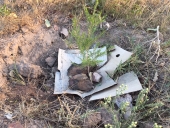









SKIP books, get 'em while they're hot!!! Skills to Inherit Property




 1
1





SKIP books, get 'em while they're hot!!! Skills to Inherit Property
 2
2




"But if it's true that the only person over whom I have control of actions is myself, then it does matter what I do. It may not matter a jot to the world at large, but it matters to me." - John Seymour




Mike Jay wrote:Hmm, you're past my know-how but there are others on here who will know for sure. It sounds like you kind of have a hugelkulture bed started. Maybe search around on this site for that word and see if it jives with what you've put together.
Don't panic, it will turn out




"But if it's true that the only person over whom I have control of actions is myself, then it does matter what I do. It may not matter a jot to the world at large, but it matters to me." - John Seymour
 1
1




Nina Jay wrote:I will add that although I recommended 20 cm of good soil, I myself often don't have that much compost... so I make do with 10-15 cm.

 1
1




Argue for your limitations and they are yours forever.




Obt Abdelkader wrote:
when you say soil, are we talking about the first 5 cm of topsoil or humus. or is it the soil the soil that you would find around 4 inches down.
i ask this question since there seem to be differing opinions of what a garden bed needs. does a garden bed need allot of organic topsoil or does it also need a good portion of soil found deeper in the earth (4 to 10 inches)
"But if it's true that the only person over whom I have control of actions is myself, then it does matter what I do. It may not matter a jot to the world at large, but it matters to me." - John Seymour

 2
2




Obt Abdelkader wrote:Help! i live in an urban area that has only clay for soil, I have tried gardening in with it but soon came to realize how useless it was. so this year I am trying to start a garden bed. only there is one problem. I have filled the beds with leaves and then added a good layer of topsoil. yet after doing some research, i learned that the leaves decompositions could harm the roots of the plants I would be planting. additionally having the only topsoil it seems would harm the plants. what should I do?
List of Bryant RedHawk's Epic Soil Series Threads We love visitors, that's why we live in a secluded cabin deep in the woods. "Buzzard's Roost (Asnikiye Heca) Farm." Promoting permaculture to save our planet.




Bryant RedHawk wrote:were known allopathic species.






|
Would you like to try a free sample? Today we are featuring tiny ads:
12 DVDs bundle
https://permies.com/wiki/269050/DVDs-bundle
|


